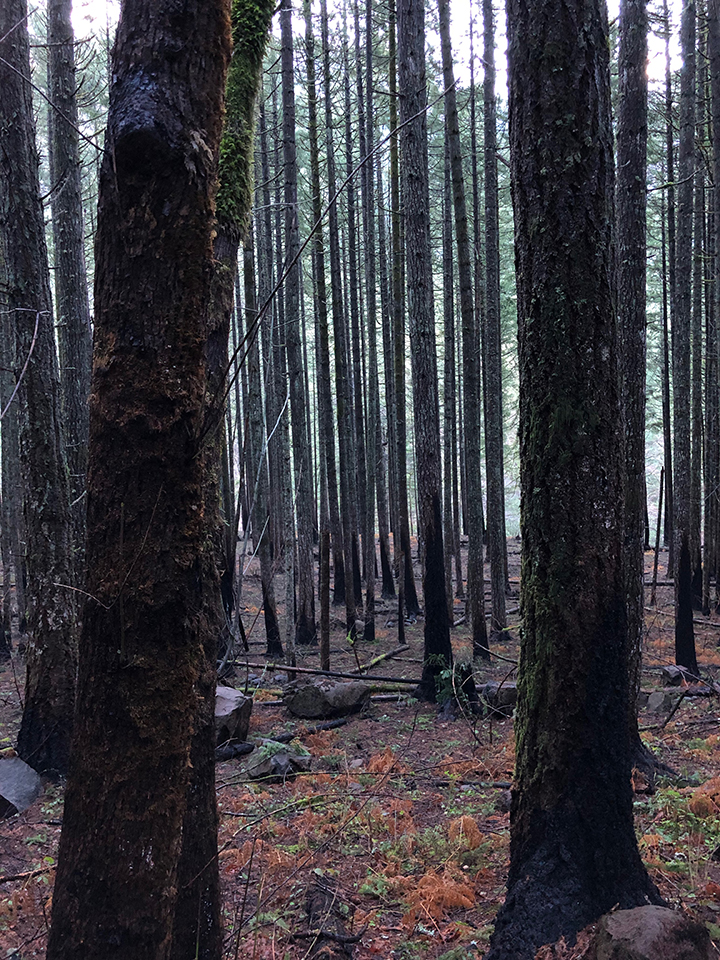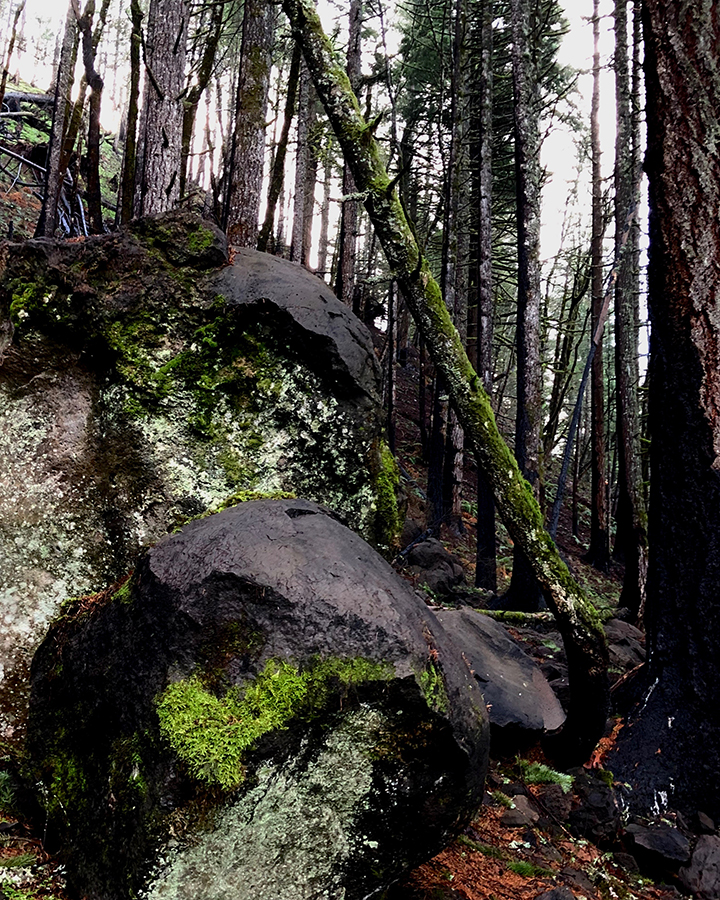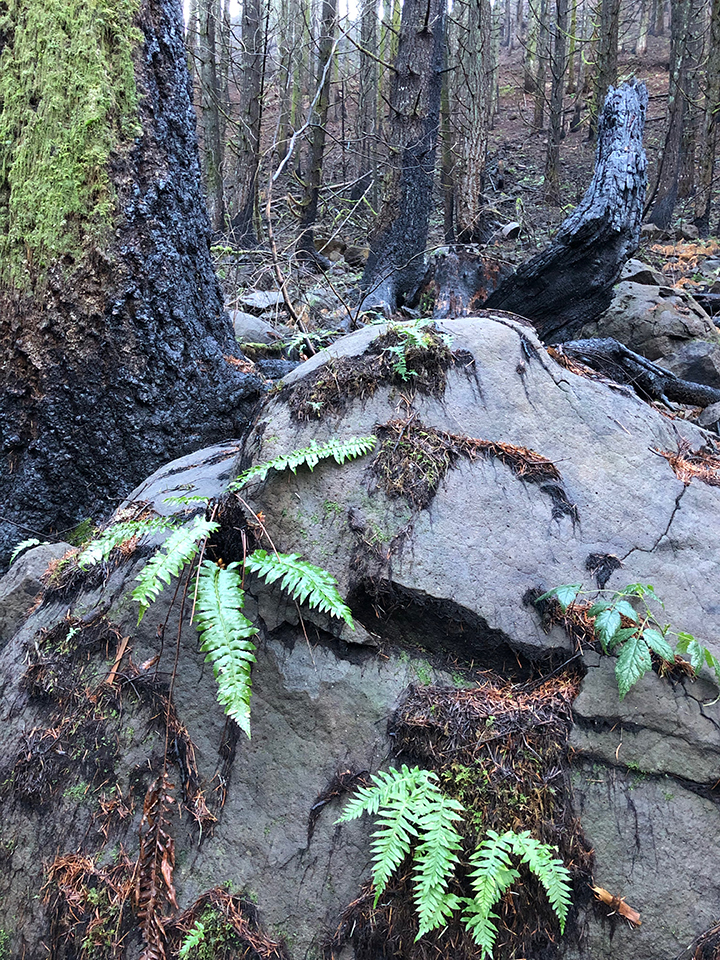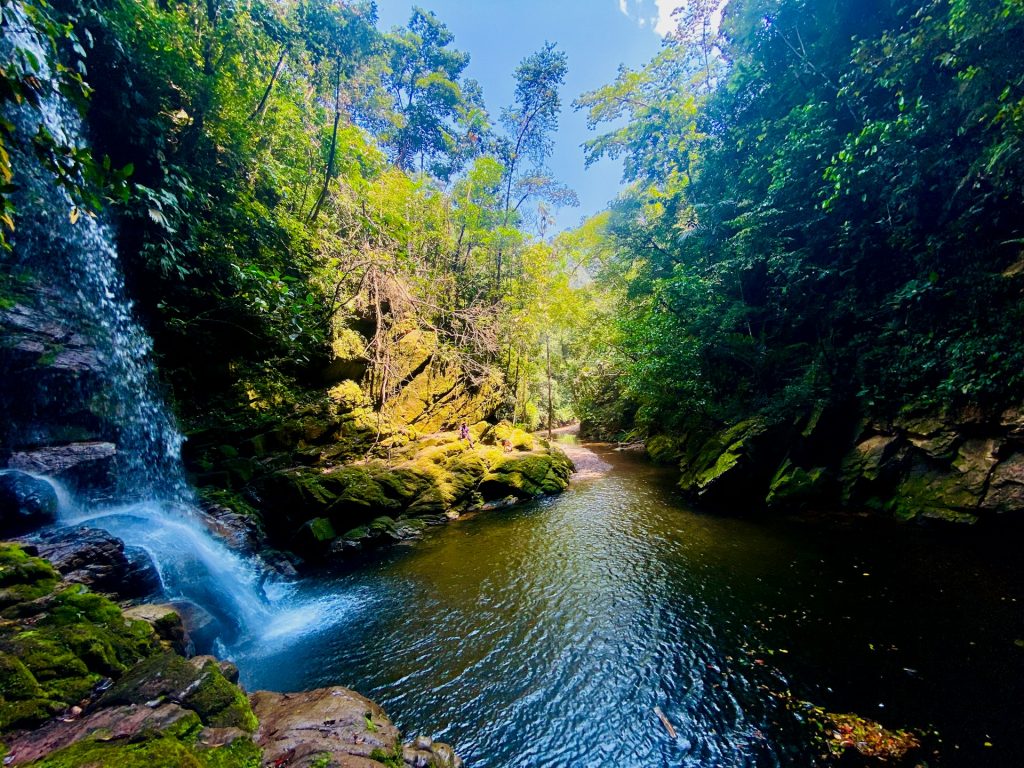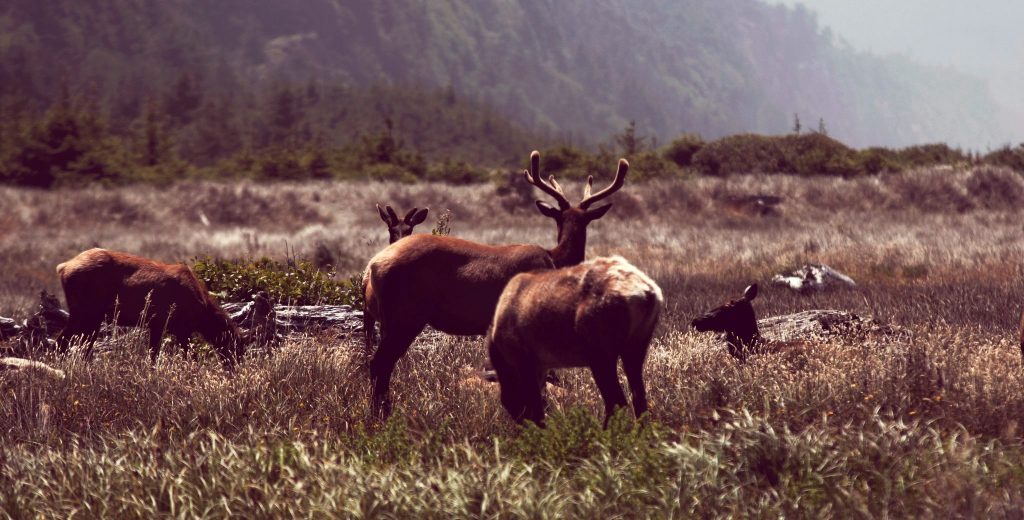A Letter to Herman Creek Canyon
Photos by the Author
A calmness seeps through charred trees, and I am reminded of the Japanese word shibui which recalls “the beauty revealed by the passage of time.” Nothing lasts. Nothing is perfect. It’s been a couple of years since I’ve been with you and your change is extreme. Incinerated by flames on Hades’ wild torch, you’re stripped and lifeless, all cracks and edges. The frozen pale path that switchbacks the canyon wall feels like an edifice of life vanquished.
Exquisite in your cold, naked beauty, you are statuesque and stunning in this mid-winter Sun. Now that ferns and emerald salal are gone, there is no softness in you. Gone too are the rotting logs that slouched under the feathery fir seedlings. How was it for you when the fire tore through? Were there screams? I have heard the cougar scream and the call of a frightened deer. I’ve seen coyotes run and squirrels leap across limb roads. Was it like that here when the Douglas firs sizzled and snapped, and sparks formed fiery tornadoes that whirled off into the wind? When the nests burned, did the crows cry out their losses of home? And what about the snakes on burning bellies and the fate of fluttering butterflies? How was it to stand witness to the devastation?
Now, one year after the fire, the black trees stand tall and straight like up-ended caskets in a crowded morgue. Holes filled with charcoal have replaced your ancient stumps that housed the forest’s tiniest creatures. Ash gray boulders the size of SUVs lie broken and unanchored on bare slopes. Gone are the scolding squirrels, the squawking crows, and the intense woodpecker banging his bill. Gone is the scree of the red-tailed hawk and the owl’s calling in the night. And gone too is the litter of leaves and limbs that cushioned my footfall and nourished the mushrooms and mycelia.
You are naked here, my love, and I admit there is beauty in your bones that I had not seen before. I stop at each switchback to admire your glamorous creek that hurls diamonds and glittering sheets of gauze into the stark unobstructed forest. There’s beauty here like a Stieglitz photograph: chiseled lines and silver reflections on tendrils of fog threading through the cadavers. Shards of winter Sun spotlight your high cascade that splits and splashes and overflows its banks and floats like a bridal train from a place in the clouds.
I must admit, I knelt to kiss you, and I was reminded there is beauty in all the varied spectra of life—from birth to death, imperfection to perfection, ugliness to elegance. There, in the center of the charred sword fern rosette, was a spot of green and next to it an emerging salal leaf. I was witness to sage-green and burnt-orange lichens on a gray rock and, in places near the creek, tiny sprouts emerged from charred mosses. You’re going to be okay. After a year in a coma, you’re showing signs of life and I am witness to your resilience. The resurrection has begun.



